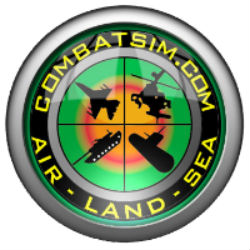 After debuting as a preview in the open beta, the legendary Hawker Hurricane, a pivotal force in the Battle of Britain, has officially landed in the main game as a new playable RAF fighter!
After debuting as a preview in the open beta, the legendary Hawker Hurricane, a pivotal force in the Battle of Britain, has officially landed in the main game as a new playable RAF fighter!
For those who missed our latest update: we introduced a beta branch, accessible to all Early Access players, where we test work-in-progress content before it reaches the core game. The Hurricane was the first feature added there, but the beta will remain open throughout the Early Access journey of the game, with frequent content updates.
Pilots, this is your call to action! Help shape the future of Scramble by sharing your feedback and battle replays. Join our community on Discord to share your experiences with other players and stay informed about upcoming content: https://discord.gg/2hPRMJ6bhU
Before you take off, check out our latest video showcasing the Hurricane’s main features and read a few curiosities about the workhorse of the Battle of Britain.
Read the changelog HERE.
The Hawker Hurricane’s impact on aviation history
The Hawker Hurricane played a critical role in the Battle of Britain, accounting for an impressive 60% of the RAF’s air victories during the conflict. Though the Supermarine Spitfire often steals the spotlight, the Hurricane was the backbone of the Royal Air Force, known for its reliability and combat effectiveness against enemy formations in nearly every major theatre in the Second World War.
Built with a steel-tube fuselage covered in fabric, the Hurricane was able to endure significant damage while remaining operational. Its thick wings allowed for remarkable maneuverability, making it ideal for tight dogfights. This robust construction also made it easier for ground crews to repair, keeping it battle-ready for longer.
Beyond the battlefield, the Hurricane remains a cultural icon, frequently celebrated in historical documentaries and airshows. Its contributions to the RAF’s success have secured its place in aviation history, inspiring generations of war historians and flight enthusiasts.
Tactical Tips for using the Hurricane in Scramble: Battle of Britain
In Scramble: Battle of Britain, the Hurricane is faithfully recreated to reflect its wartime strengths. Its durability and steady gun platform make it perfect for delivering precise strikes against enemy bombers and fighters alike. The aircraft’s exceptional maneuverability gives players the edge in close-quarters combat, holding aim steady in the heat of battle.
While the Spitfire remains famed for its speed and sleek design, the Hurricane excels in resilience and firepower. Its reliability makes it particularly effective against bombers, while the Spitfire’s speed often makes it better suited for interception roles. Your choice of aircraft depends on whether you value durability and sustained firepower or speed and interception tactics.
The addition of the Hawker Hurricane lets you experience first-hand the power and resilience of this legendary aircraft. Take to the skies and see if you can turn the tide of battle, just like the heroes of 1940.
Visit the games official website for game information, or via Steam.
 Scramble: Battle of Britain is a tactical dogfighting game that thrusts players into the High-Octane chaos of the 1940 summer skies. Set in a dynamic 3D airspace, this simultaneous-turn-based game embraces the intricate details of aerodynamics and physics-based simulation unique to the piloting experience while minimizing time and reflex demands.
Scramble: Battle of Britain is a tactical dogfighting game that thrusts players into the High-Octane chaos of the 1940 summer skies. Set in a dynamic 3D airspace, this simultaneous-turn-based game embraces the intricate details of aerodynamics and physics-based simulation unique to the piloting experience while minimizing time and reflex demands.
